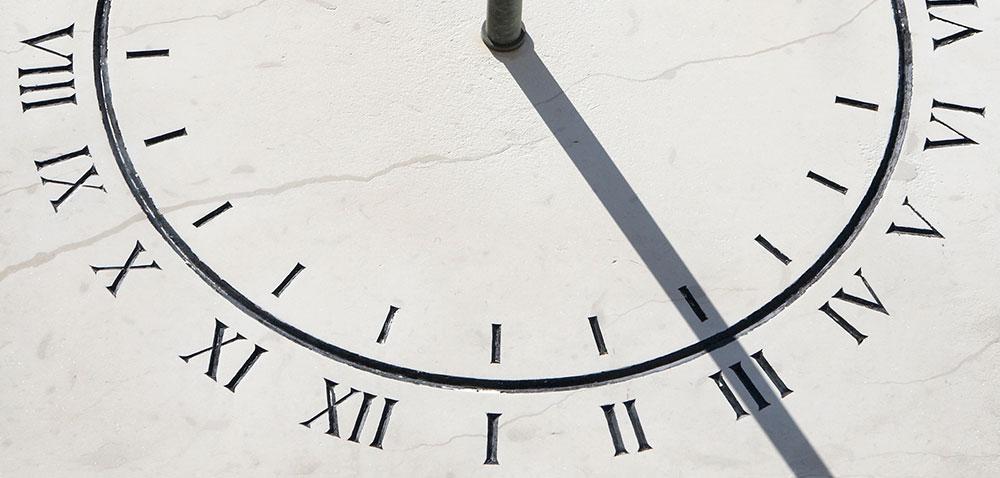How the Romans tinkered with time

The Romans were known to be excellent organisers. So naturally, they were constantly devising ways to measure and mark time. Various kings of Rome created calendars to mark days, experimenting with many different formats until they finally arrived at the ‘Julian calendar’ the basis for the Gregorian calendar we use today.
While we now know a year as ‘the time it takes Earth to complete a full orbit of the Sun’, in Roman times, the only real measure of time they had was night and day, the weather and the shape of the moon. It’s by measuring these that they created their calendars.
The term ‘calendar’ itself comes from the word ‘Kalends’, which the Romans used for the first day of the month. The first day of the month was chosen to coincide with the arrival of the new moon. Before the Julian calendar was created, the Roman calendar used to start on March 1st, with an un-named period of winter lasting 61 days, which led to all kinds of problems.
It’s tricky moving from one calendar design to another. So 46BC was a very strange year. Known as ‘the last year of confusion’ it was 445 days long, with two extra months inserted between November and December – these were known as Intercalaris Prior and Intercalaris Posterior. It’s strange enough celebrating a birthday if you were born on 29th February in a leap year, but can you imagine being born in a month that only existed for one year?
While we now know a year as ‘the time it takes Earth to complete a full orbit of the Sun’, in Roman times, the only real measure of time they had was night and day, the weather and the shape of the moon. It’s by measuring these that they created their calendars.
The term ‘calendar’ itself comes from the word ‘Kalends’, which the Romans used for the first day of the month. The first day of the month was chosen to coincide with the arrival of the new moon. Before the Julian calendar was created, the Roman calendar used to start on March 1st, with an un-named period of winter lasting 61 days, which led to all kinds of problems.
It’s tricky moving from one calendar design to another. So 46BC was a very strange year. Known as ‘the last year of confusion’ it was 445 days long, with two extra months inserted between November and December – these were known as Intercalaris Prior and Intercalaris Posterior. It’s strange enough celebrating a birthday if you were born on 29th February in a leap year, but can you imagine being born in a month that only existed for one year?
